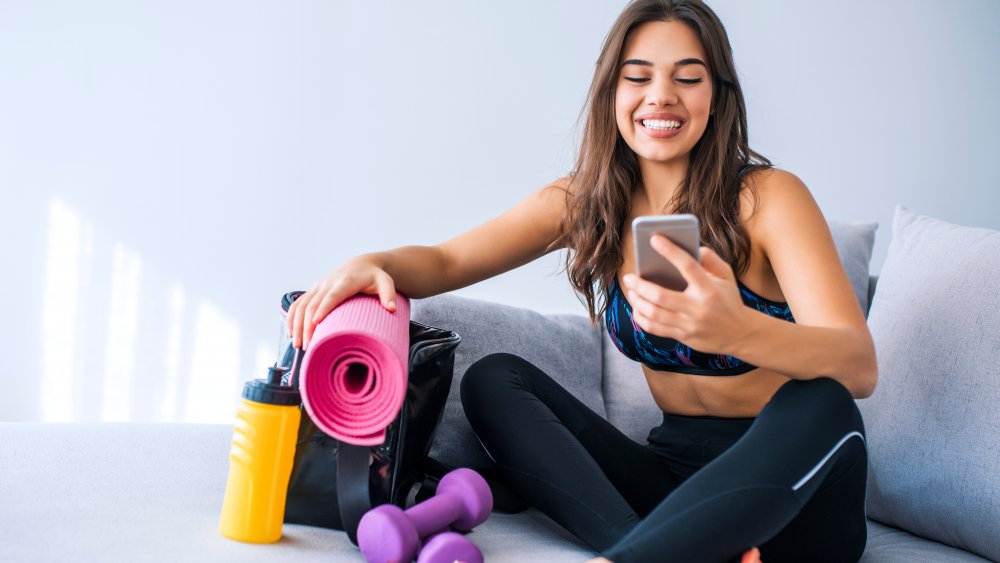How To Stay Safe While Working Out Indoors
With fall fast approaching and fitness centers re-opening across the country, many of us may be thinking of heading back to the gym. But is it safe? Given that the U.S. is averaging between 35,000 and 50,000 new confirmed COVID-19 cases a day so far this month (via the Johns Hopkins Coronavirus Resource Center), one thing that definitely needs to be exercised is caution.
"When you have a relatively high density of people exercising and sweating in a contained space, you have conditions where communicable diseases can spread easily," explains James Voos, M.D., head team physician for the Cleveland Brown and chairman of orthopedic surgery at University Hospitals Cleveland Medical Center (via The New York Times). Voos recently co-authored a study that found influenza virus and drug-resistant bacteria on 25 percent of the surfaces tested in multiple athletic training facilities, including door and drawer handles, water bottle lids, and water cooler nozzles.
Thankfully, the study found that overall bacterial load was reduced by almost 95 percent after hygiene protocols were implemented, including the use of checklists reminding athletes to wash or sanitize their hands before entering the facility, disinfect equipment before and after use, shower if they've been active, cover cuts, and avoid sharing water bottles.
Here's how to plan ahead for hitting the gym
While the study was conducted prior to the pandemic, the basics of practicing good hand hygiene and sanitizing equipment are still helpful, in addition to (of course) wearing a mask both in and out of the locker room. Even better, you can minimize your risk by calling ahead to ensure your gym is up to code before leaving your house. The Mayo Clinic advises checking to see what capacity limits have been put in place and if there is a reservation or waiting list you can access electronically or without touching.
Also, find out what the cleaning policies are (are the disinfectants EPA-approved?) and ask if you'll be able to use the locker room or bathroom so you can plan accordingly. Some gyms may not be offering fitness classes at this time, so inquire first if this is your preferred mode of exercise. Or skip the group classes for now and opt for a personal trainer if you need the interaction to keep you motivated.
However, you still may want to skip the gym — for now. "From an indoor exercise standpoint, I think it's risky," says Lou Ann Bruno-Murtha, D.O., division chief of infectious diseases at Cambridge Health Alliance, in an interview with Today. "I would be a little bit hesitant to join a group class unless there were very few people. You'd have to be able to ensure physical distancing of a minimum of 6 feet. For heavy breathing, I would like to see doubling that out of an abundance of caution."


